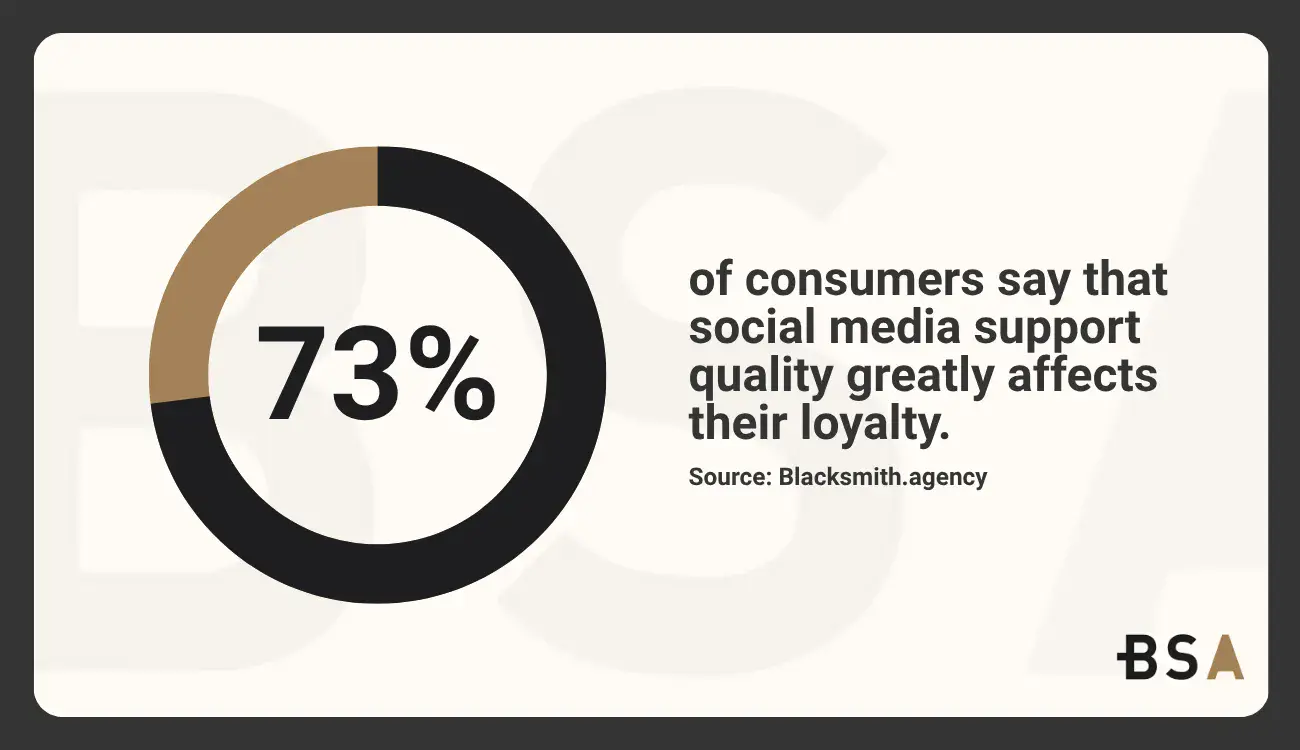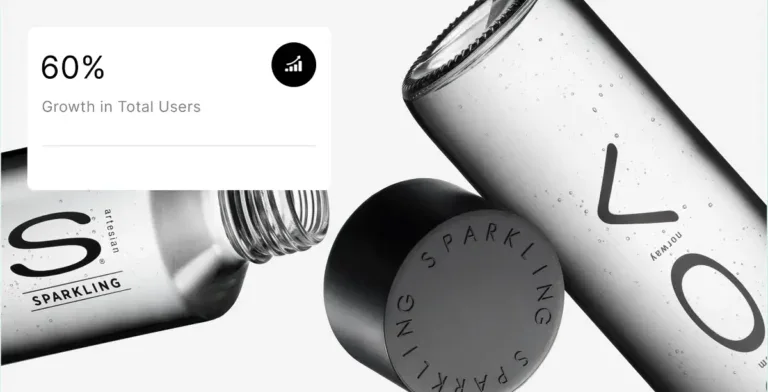Did you know that almost half of companies lack a clear digital marketing strategy? This explains why an eCommerce marketing plan can struggle to deliver real results sometimes.
A good eCommerce digital marketing plan links your strategies to clear KPIs and business goals. Your plan needs multiple channels working together to deliver one clear message.
This makes sense since 63% of people worldwide use their phones for everything, including social media.
Want to build an eCommerce marketing plan that delivers results? This piece shows you every step you need, from building foundations to keeping customers coming back after their first purchase.
Are you looking to redesign your website but don’t know where to start? Let us help.
Set the Foundation for Your eCommerce Marketing Plan
Starting a successful eCommerce business requires more than just launching an online store and hoping for sales. Your business needs strategic planning to get a share of this growing market.
A solid foundation must come before any marketing tactics.
Define your business goals and vision
Your eCommerce marketing plan needs clear goals. Setting proper standards helps you track progress and tells you if your work pays off. Look at your business’s current position.
How many leads did you get last quarter? What about the same time last year?
The data comparison should factor in seasonal changes.
Your next step is to define what success means for your business.
Would a 20% boost in sales make sense?
Your campaigns need clear targets. They can focus on brand awareness, organic traffic, or online revenue. Your team should know these objectives clearly.
Your goals will work better with the SMART framework:
- Specific: Define precise objectives that answer who, what, where, and how.
- Measurable: Choose metrics to track and set up systems to monitor KPIs.
- Achievable: Set realistic and useful goals.
- Relevant: Goals should match your broader business strategy.
- Time-bound: Each goal needs a clear deadline.
Mission and vision statements light the way for your marketing work. Your mission statement shows what your business does now—who you serve, how you operate, and why you exist.
Your vision statement points to what your business wants to become.
Know what makes up an eCommerce marketing plan
A complete eCommerce marketing plan brings together key pieces that match your business goals.
Account planning focuses on understanding the person who needs your products, not just selling them.
The 5 C’s are the foundations of your eCommerce marketing plan: Company aspirations, potential strategic Collaborations, target Customers, existing Competitors, and the common online Context. These elements shape your path forward.
Your plan should cover the classic marketing mix: Product, Price, Promotion, Place, People, Packaging, and Process. Each part needs careful attention to create a unified strategy.
The plan also needs sections about your customers through buyer personas. These profiles show their habits, pain points, and favorite platforms like Facebook and email.
Each marketing initiative should list specific tasks with clear roles for accountability.
Why planning matters more than ever
eCommerce businesses face new challenges that make strategic planning crucial. Online stores are easier to start now, which makes almost every product category more competitive.
You need a well-laid-out plan to stand out.
Getting new customers through paid channels costs more now. This makes customer retention and lifetime value key to sustainable growth. Privacy rules and platform changes restrict third-party data access.
So, you need better first-party data strategies.
Customers now find and interact with brands in many different ways. This needs coordinated approaches across multiple channels.
Today’s shoppers expect individualized experiences, smooth transactions, and real connections with brands.
Planning creates purposeful strategies that bring real results. It sets your direction, makes goals clear, and helps measure success.
Without this foundation, your marketing can turn into scattered tactics. This makes it hard to create a strong strategy that helps your business grow.
Plan With Purpose: Setting Goals and KPIs
Guesswork won’t build eCommerce success. The old saying “you can’t manage what you don’t measure” makes perfect sense for online stores competing in crowded marketplaces.
Your eCommerce marketing plan should have clear goals and exact metrics. These are essential for consistent growth.
Use SMART goals to guide your strategy
The SMART framework turns unclear marketing ideas into practical plans. This method helps you set clear and realistic goals. It gives your marketing efforts direction and purpose.
Each letter stands for an essential component:
- Specific: Your goals need exact targets. Instead of saying “improve social media,” focus on “increase Instagram engagement.”
- Measurable: Numbers matter here. “Increase Instagram engagement by 5%” gives you a clear benchmark to track progress.
- Achievable: Your targets should reflect industry data and available resources. While ambitious goals motivate action, unrealistic ones lead to frustration.
- Relevant: Your goals must support broader business objectives. Each marketing goal needs to contribute directly to your company’s mission.
- Time-bound: Deadlines create focus. A specific timeframe adds urgency and evaluation points: “increase Instagram engagement by 5% by the end of Q4”.
SMART goals build accountability and focus. They turn abstract marketing ideas into concrete steps. Teams understand expectations better and have clear measures of success.
Choose the right KPIs for eCommerce success
Key Performance Indicators (KPIs) mark important checkpoints on your path to online retail success. Raw data becomes practical insights that shape strategic decisions.
Most eCommerce businesses track KPIs across five areas: sales, marketing, customer service, manufacturing, and project management.
Your specific business goals should determine which KPIs to track:
Revenue-focused KPIs reveal financial health. For example, Average Order Value (AOV) shows how much customers usually spend per order. Conversion Rate (CR) indicates the percentage of visitors who complete desired actions.
Customer-centered KPIs track relationship strength. Customer Lifetime Value (CLV) predicts expected revenue from each customer relationship. Customer Retention Rate reveals the percentage of customers staying with your business over time.
Marketing efficiency KPIs evaluate your marketing spend’s effectiveness. Customer Acquisition Cost (CAC) shows the cost of gaining each new customer. Traffic Source analysis reveals which channels bring visitors to your site.
KPIs work best when analyzed together. Looking at how metrics connect gives you a clear view of business performance and customer experience.
Line up marketing goals with business outcomes
Marketing goals must support your broader business objectives. This approach ensures marketing budgets drive measurable success.
Start with your company’s clear money goals. These can be revenue targets, lead generation numbers, or ROI expectations.

Marketing objectives should clearly support overall success:
A business goal to increase revenue by 20% in six months might focus on KPIs like total sales revenue, conversion rate, and average order value.
Goals to boost website traffic by 30% in three months would track unique visitors, page views, and organic search traffic.
Strategic collaborations between departments help maintain this focus. Sales and product development teams can join forces.
This way, marketing can boost the efforts of other teams. This teamwork helps everyone see how marketing drives business growth.
Regular reviews and adjustments keep goals on track as market trends and business priorities change. Regular performance checks help you adjust your efforts. They ensure your marketing efforts align with business goals.
Reach Your Audience Through the Right Channels
The heart of any eCommerce marketing plan is reaching the right customers at the right time and through the right channels.
Successful online stores don’t cast wide nets. They target prospects who are most likely to become loyal customers.
Identify your target audience and buyer personas
Your target audience consists of people who will likely buy your products or services. These customers come back, tell their friends about you, and share positive feedback on social media.
You’ll need detailed buyer personas to reach this audience. These personas show your ideal customers. They are based on market research and feedback from your current customers.
Strong buyer personas mix demographic data, like age, location, and income, with psychographic info. This includes interests, challenges, motivations, and buying habits. This helps you understand your customers’ identities and their purchasing decisions.
Research builds the foundation of accurate personas. Start by talking to your existing customers who illustrate your target persona.
Next, reach out to prospects and people outside your contact database who align with your audience. You should talk to at least three to five people for each persona you create.
Most businesses don’t have just one customer persona.
Companies typically begin with two to five buyer personas to target different audience segments. These personas guide your content, messaging, and product development. They help you meet the specific needs of each customer group.
Select the best marketing channels for your products
Your choice of marketing channels depends on your resources, strengths, and products. Different products need different approaches.
To name just one example, brand-driven products perform better on visual platforms like Instagram or TikTok.
Price points influence channel selection. Higher-priced items need more relationship building than what social platforms offer.
Finding where your target audience spends time online is vital.
What streaming services do they use? Which social platforms do they prefer? What content types make them tick?
These answers help position your marketing materials to attract more potential customers.
Your marketing budget limits channel options. Social media posting costs nothing, but platforms like Google Ads can get pricey. Think about each channel’s potential return on investment before committing resources.
Balance paid, owned, and earned media
A complete eCommerce marketing strategy merges three types of media:
Paid media includes any form of promotion you pay for. Google Ads, social media advertising, and sponsored content. This gives you immediate exposure and helps you reach wide audiences quickly.
But relying only on paid media can get expensive without lasting results.
Owned media includes digital assets you control, like your website, blog, social media profiles, and email newsletters.
You control your narrative and build direct communication with your audience. Good search engine optimization ensures your content ranks well in search results.
Earned media is free publicity. It includes customer reviews, social media mentions, press coverage, and word-of-mouth referrals.
While you can’t control it directly, earned media builds credibility and visibility significantly.
This balanced strategy creates synergy. Use paid media to boost your owned content. This leads to earned media as customers engage with it.
Keep your messages consistent in all media. This helps strengthen your brand identity and build trust with your audience.
Drive Engagement and Generate Leads
Building relationships with potential customers requires more than basic advertising. A good eCommerce marketing plan requires smart content. It should help connect with prospects and guide them through your sales funnel.
This way, they turn into loyal buyers.
Create compelling content for each stage of the funnel
Your content marketing funnel affects how customers feel. It provides tailored material at every stage. Top-of-funnel (TOFU) content aims to grab attention and build awareness.
This strategy includes eye-catching blog posts, infographics, paid ads, landing pages, and quizzes. These tools help you rank in search results and attract potential customers.
Prospects at the Middle-of-funnel (MOFU) need deeper information about your offerings. Your content should establish you as an industry leader at this point. Effective MOFU content has:
- How-to guides and video tutorials
- Case studies highlighting customer success stories.
- Webinars and detailed educational content
- Email newsletters with regular updates.
- Comparison guides showing your advantages.
Bottom-of-funnel (BOFU) content addresses specific needs that help prospects make decisions. Customer testimonials, product demos, and clear sales materials help leads decide to buy at this stage.
Use email to nurture interest
Email marketing offers great ROI and outperforms other digital marketing methods. Campaigns tailored to your audience’s interests and buying stage nurture leads effectively.
Welcome series emails introduce your brand, give valuable information, and encourage first purchases. Studies show the retail industry’s email open rates double with personalized subject lines. This makes customization vital for engagement.
Cart abandonment emails help remind customers about items they left behind. They often include special offers to encourage a purchase. These insights help refine your email approach based on what strikes a chord with your audience.
Post-purchase emails thank customers and ask for feedback. They also offer discounts for future purchases to build loyalty. Automated replenishment flows for consumable products remind customers when it’s time to reorder.
Use social media to build brand interaction
Social platforms give unique ways to connect with prospects throughout their buying experience. Consumers expect brands on social media to engage with them. They want answers to questions and to see product showcases.
Your brand’s community grows stronger when you encourage user-generated content (UGC). Customers who share photos, reviews, and stories about their experiences create real content. This makes them feel valued as part of the community.
Research shows UGC substantially impacts purchasing decisions for 79% of people.
Quick responses to comments, messages, and reviews encourage meaningful interactions. Two-way engagement builds stronger connections.
Also, 73% of consumers say that social media support quality greatly affects their loyalty.

Q&A sessions, live chats, and webinars let you connect directly with your audience. This builds stronger relationships.
Posts with high engagement show what your fans find interesting. These insights help you create more content that strikes a chord with your specific audience.
Convert Visitors into Paying Customers
Your eCommerce marketing plan reaches its defining moment when visitors become paying customers. Cart abandonment rates are about 70%. You can boost your bottom line with better conversion optimization.
Optimize your website for conversions
Sales directly depend on optimized checkout processes. Customers abandon 48% of orders during checkout because of unexpected costs. You can prevent these losses through smart optimization. A single-page payment process increases conversions. Guest checkout options make a difference too.
Building trust matters at this vital decision point. Your checkout flow should display SSL certificates, payment badges, and security indicators.
Payment security concerns cause 25% of users to abandon their checkouts.
Want a website that converts more and retains customers in the process? We can help.
Use retargeting and PPC to close the deal
Retargeting helps you win back customers who showed interest without buying. These ads work 10 times better than standard displays. They keep your brand visible while visitors browse other sites.
Quick action matters for abandoned carts. Send your first remarketing message within an hour, then follow up over 48 hours.
This strategy reduces abandonment by 6% and boosts online sales by nearly 20%.
Dynamic retargeting shows customers the exact products they viewed on your site. This tailored approach helps recover potential losses of USD 260 billion across the U.S. and EU markets.
Personalize the shopping experience
Personalization turns browsers into buyers. Companies that excel at personalization earn 40% more revenue.
AI product recommendations boost conversion rates by 8% and increase average order value by 12%. These smart systems analyze shopping patterns to suggest the right products at perfect moments.
Your entire shopping experience needs customization. Modern businesses use AI, machine learning, and behavioral analytics. They optimize layouts and improve notification timing.
This advanced approach increases revenue by 6-10%. This is much faster than generic marketing strategies.
Engage and Retain Customers Post-Purchase
A customer relationship begins, not ends, with a purchase. Your eCommerce marketing plan should go beyond conversion to maximize customer lifetime value.
Build loyalty with rewards and referral programs
Loyalty programs turn casual shoppers into brand supporters through purchase rewards. Successful programs let customers earn points.
They can use these points for discounts, free products, or special experiences. Netflix and Sephora shine with their tiered VIP programs. These systems offer better perks as customers engage more with the brands.
Rewards are most effective when both sides benefit. Success rates improve when referrers and new customers get incentives.
Many brands give existing customers a discount to refer friends, plus a welcome discount for newcomers. This two-way benefit creates a strong reason to share.
Use post-purchase emails and feedback loops
Smart post-purchase communication creates lasting customer connections.
Customer satisfaction peaks right after purchase, which makes it a great time to ask for feedback.
In contrast, simple confirmation emails perform worse.
Netflix showed how small changes matter by switching from five-star ratings to thumbs up/down, which made engagement jump 200%. This small change helped them understand what their subscribers value.
As a result, they could personalize better.
Follow-up emails should include thanks, feedback requests, and future purchase incentives.
Encourage user-generated content and reviews
User-generated content works like digital word-of-mouth marketing. Customer photos, reviews, and stories build trust. This content feels authentic and makes brands more relatable.
Recognizing contributors helps featured customers feel valued. It also encourages others to participate.
Get a Custom eCommerce Marketing Plan That Converts With Blacksmith
Good marketing planning can change random tactics into effective campaigns that focus on results.
Your eCommerce marketing plan should go beyond attractive campaigns. It needs to cover every step of your customer’s journey.
Start with strong basics, clear business goals and vision. Then create SMART objectives connected to relevant KPIs that show real progress instead of vanity metrics. These basics will guide your marketing choices.
But let’s face it, creating a complete eCommerce marketing plan from start to finish takes a lot of time. This is time you could use to manage and plan other aspects of your business.
So what now?
That’s where we come in. Here at Blacksmith, we’re eCommerce experts with dozens of eCommerce marketing plans under our belt. We know the ins and outs of every step and how to successfully implement it to your business.
As an eCommerce web development agency, we understand how important every step in an eCommerce marketing plan is. And having a well established and easy to navigate eCommerce website that sells is the first thing any brand should have set before considering any strategy or plan.
With our group of seasoned web developers you’ll get the perfect eCommerce website that your brand deserves and that builds the foundation for an exceptional eCommerce marketing plan that works.
Unsure if investing in a custom eCommerce website is a good idea for your business? Click here to schedule a call with us and we’ll audit your brand and show you all of the potential customers you’re losing due to issues on your website and your eCommerce strategy.









